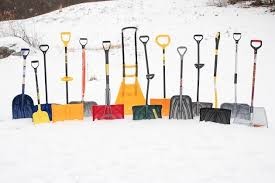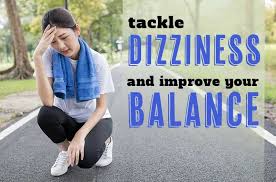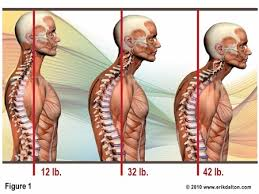Safe Snow Shoveling
The dreaded, but necessary, chore is back! It’s time to get a snow shovel out, but have you ever really given it much thought?
Often, the need for shoveling snow interferes with our plans and the schedule of everyday life. Consequently, we face this unwanted chore unprepared, and in a hurry to get it over with as fast as possible. All that bending and lifting of heavy snow can put you at serious risk for injury and place undue stress on your heart. If we are not careful, we could experience cold exposure, fatigue, muscular strains and more serious injuries, particularly to the lower back. Before you tackle your driveway at the next snowfall, take some time to read about these safety snow shoveling tips to help avoid any potential injuries.
Your technique is very important because snow shoveling is a common cause of back pain and can exacerbate an existing back condition. Your back is like a long lever arm. The further away you have the snow weight, the more strain it is on your back. This is because gravity exerts a great force on the weight at the end of the shovel, and the muscles that support us have to work that much harder to counteract gravity’s effect.
Cold weather makes one feel less thirsty, which increases the risk of dehydration, especially with strenuous physical activity. Dehydration impairs the body’s ability to regulate heat, making the underlying tissues cold and numb. As a rule, it is wise to adequately hydrate by drinking water or other fluids before shoveling snow and sipping fluids while taking breaks from shoveling.
The first step is planning a warm-up before heading outside. Muscles that are cold and tight are more injury-prone than those that are warmed up and flexible. It’s good to invest 10 minutes of stretching, particularly the muscles in the low back and hamstrings.

- Avoid early mornings or right after waking up from sleep. During this time, spinal discs are hydrated to their maximum, making the spine slightly unstable, and may be at a higher risk of damage by herniation through bending or twisting movements.
- Choose a snow shovel that is right for you! A curved handle helps you to keep your back straighter when shoveling. Get a shovel that is comfortable when your knees are slightly bent, and your back is bent no more than 10 degrees. A plastic shovel blade is lighter than a metal one, thus you will lift less weight with each stroke. Avoid a blade that is too large, a small blade can’t shovel as much, so again, the weight is less.
- Squat with your legs apart, knees bent and back straight. Do not bend at the waist! Lift with your legs.
- Never remove deep snow all at once; do it piecemeal. Shovel the top about an inch or two; then take another inch off. Rest and repeat if necessary.
- Push the snow, do not lift it. Pushing puts far less strain on the spine than lifting. When snow must be moved to a new location, don’t reach or toss the snow with the shovel. Walk it over and keep the shovel close to your body. Grip the filled shovel with one hand as close to the blade as comfortably possible and the other on the handle at least 12 inches apart from each other. The spine is strained with excess weight when holding it with the arms outstretched.
- Never throw over your shoulder. This forces the spine to be twisted as you are loading it and places you at risk of injury. Shoveling snow can place a lot of strain on your shoulders. Lifting and throwing heavy piles of snow or hitting hard ice hidden beneath the snow can result in shoulder damage. Lifting too much snow can aggravate arthritis or further injure worn rotator cuff tendons.
- Keep your back straight. By bending and “sitting” into the movement, you’ll keep your spine upright and less stressed.
- Move with your feet, not with your back. Keep your nose and toes in the same direction!
- Where possible, it is more practical to shovel early and often. Fresh dry snow is lighter and more manageable than wet, heavily packed, or partly melted snow.
Numerous scientific research studies over the years have identified the dangers of shoveling snow for people with and without previously known heart disease. In general, if you load a shovel (weighing over 1 kg) with 5 kg of snow (just about the average) every 5 seconds, you will move a load of over 70 kg in one minute. Repeat for 15 minutes and you will have shoveled 1,000 kg of snow. Such effort is obviously not for everyone! The strain of heavy snow shoveling may be as, or even more, demanding on the heart than taking a treadmill stress test. A study conducted in Canada a few years ago found that the chance of heart attack after a snowfall increased among men, but not among women. The study found that, compared to no snowfall, a heavy snow – about 7-8 inches – was associated with 16% higher odds of men being admitted to the hospital with a heart attack, and a 34% increase in the chance of men dying from a heart attack.
There are even studies that show an increased risk for heart attacks among people using automatic snow blowers. Similar to the extra exertion of pushing a shovel, pushing a snow blower can raise heart rate and blood pressure quickly. The mix of cold temperatures and physical exertion increases the workload of the heart. Also, don’t shovel while smoking, eating or after consuming caffeine or alcohol (also avoid this immediately after shoveling); this may place extra stress on your heart.
- Listen to your body! This is the most important snow shoveling tip. If something feels abnormal, or if you’re tired, it’s time to stop and take a break!
- If you have a heart condition, you should discuss with your medical physician if snow shoveling poses a risk to your health.
- Dress warmly and be aware of hypothermia.
- Learn the signs of a heart attack.
- Keep your phone handy. If you’re experiencing an emergency, call 911 immediately.
- Learn CPR to help others in your family, or even a neighbour!
If you work out regularly and you have a healthy heart, you won’t be too panicked about how your body will respond to snow shoveling. However, being mindful of what signs or symptoms your body is giving you is always recommended.




